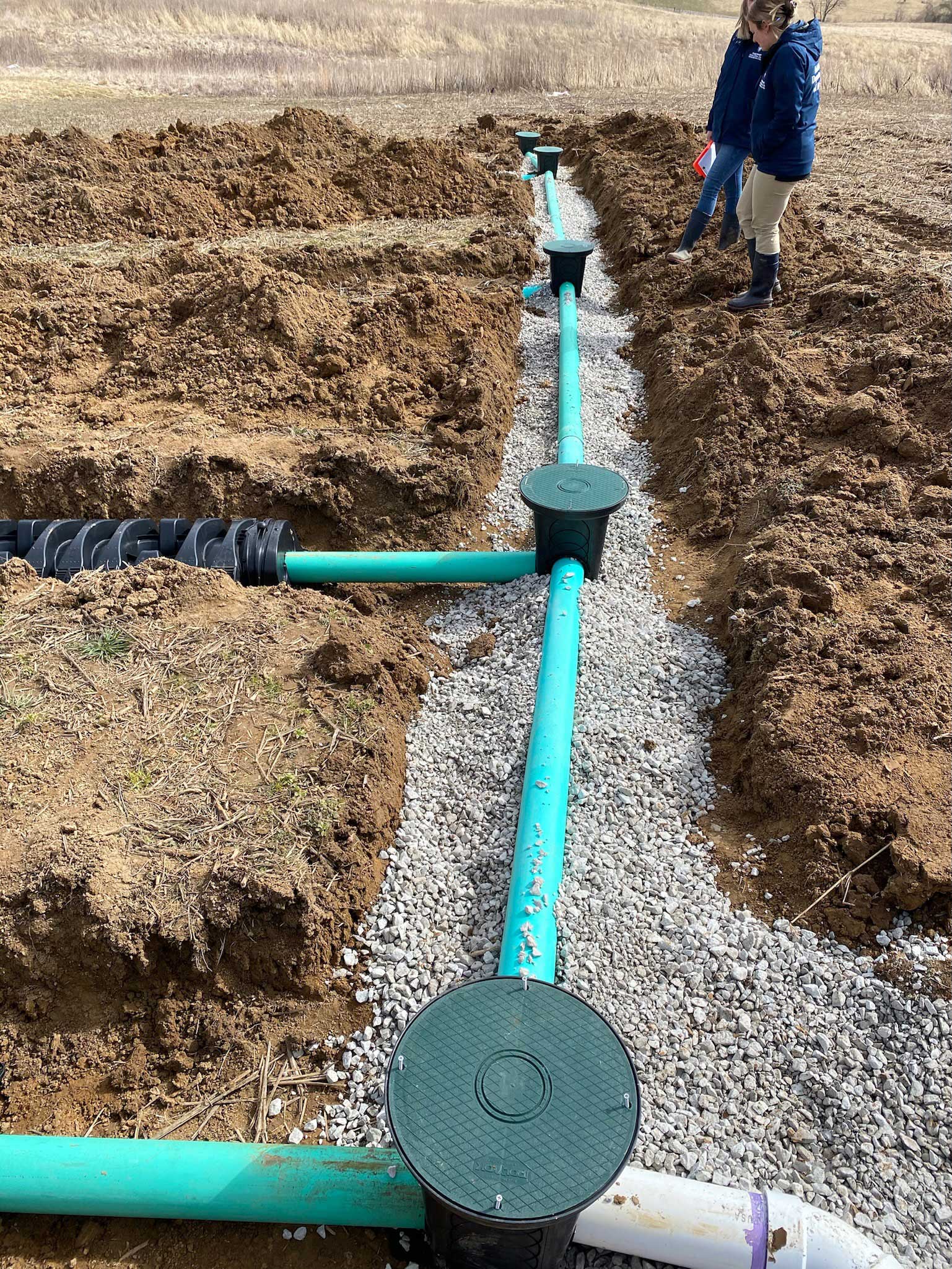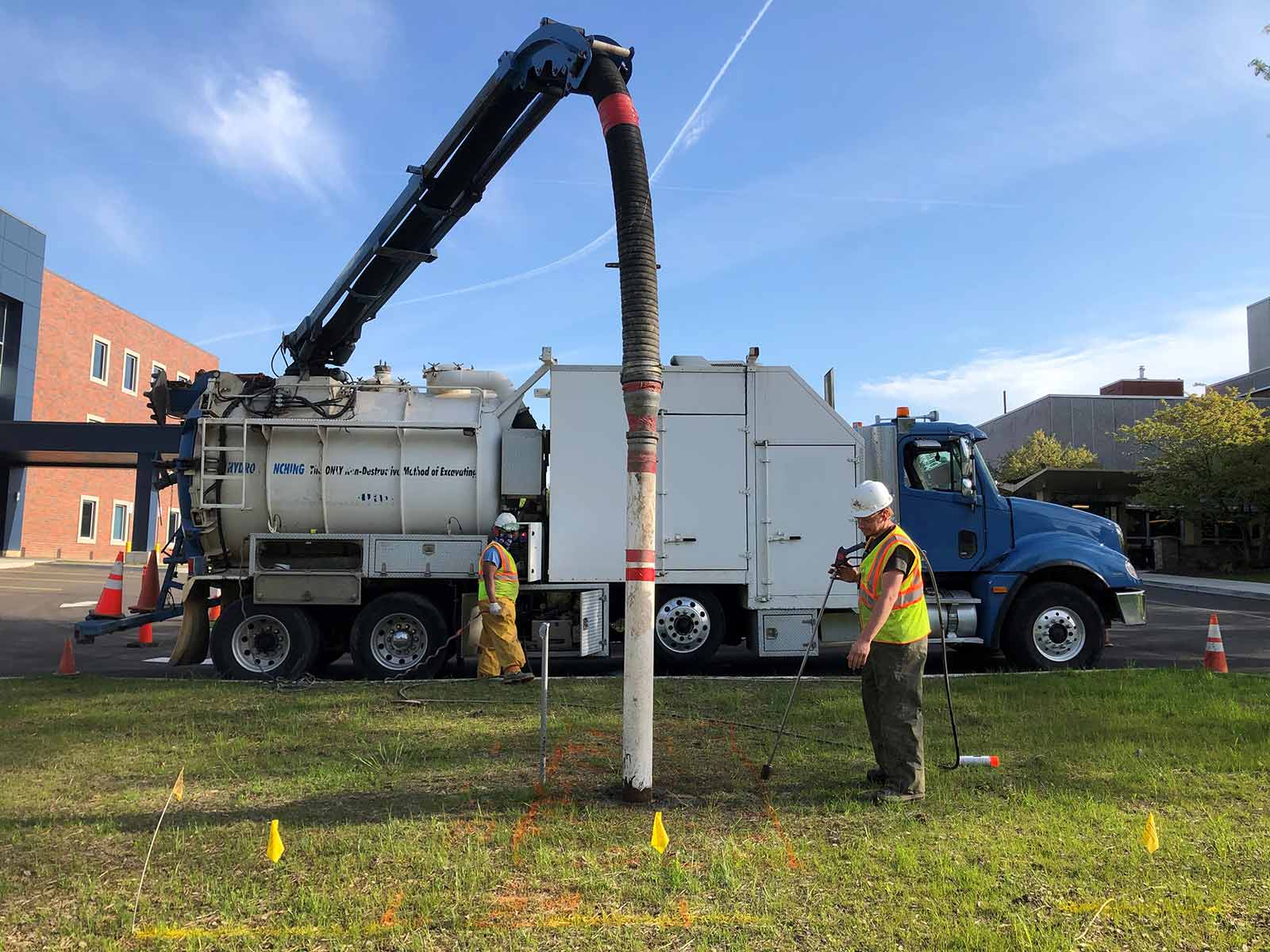Budget Friendly Lancaster Excavation - High Quality Excavation at Competitive Costs
Budget Friendly Lancaster Excavation - High Quality Excavation at Competitive Costs
Blog Article
Revealing the Art of Excavation: Pro Tips for Safe and Productive Excavating
In the realm of excavation, the mastery of secure and effective excavating is an art form that requires adherence, accuracy, and understanding to recognized techniques. As dirt is turned and planet is moved, the details of excavation disclose themselves, demanding a keen understanding of devices, dirt composition, safety and security procedures, and environmental factors to consider. The proficiency required to navigate these aspects efficiently can mean the difference in between a successful excavation task and a prospective disaster. By unwinding the layers of this detailed procedure, a globe of approaches and insights waits for those seeking to elevate their excavation skills to brand-new elevations.
Relevance of Appropriate Devices
To guarantee the safety and security and efficiency of any excavation job, making use of the proper tools is critical. Excavation projects differ in scope and intricacy, ranging from tiny domestic landscaping jobs to large construction endeavors.
These versatile machines come in various sizes to suit various job requirements. Miniature excavators are optimal for smaller tasks, while larger excavators take on extra extensive tasks successfully.
Excavators excel in jobs that call for pressing huge amounts of soil or debris. By spending in the appropriate equipment, excavation jobs can be completed securely, on time, and with precision.
Recognizing Soil Composition
A detailed understanding of soil composition is essential for executing excavation tasks with accuracy and security. Comprehending the different kinds of dirt is vital as it straight influences excavation methods, equipment choice, and overall job efficiency. Dirt structure normally contains four major parts: sand, silt, clay, and raw material. Each part has distinct buildings that influence exactly how dirt responds to excavation processes.
Sand particles are the largest and offer great drainage yet provide little communication. Silt bits are smaller sized than sand however bigger than clay, offering modest drain and communication. Clay particles are the smallest and supply high communication but poor drainage. Organic issue, such as rotting plant product, affects soil fertility and security.
Prior to beginning excavation, performing soil tests to identify its composition and characteristics is necessary. This information helps in choosing the suitable equipment, carrying out precaution, and developing excavation methods customized to the specific dirt conditions - dump truck companies in ohio. By understanding dirt structure, excavation professionals can enhance project outcomes while guaranteeing security and adherence to finest practices
Safety Steps and Procedures
Recognizing dirt structure is the cornerstone whereupon safety steps and protocols for excavation tasks are constructed, ensuring the well-being of workers and the success of the venture. There are numerous essential measures that have to be applied to reduce dangers and prevent accidents. when it comes to safety and security during excavation.
Most importantly, before any digging begins, a detailed inspection of the website must be conducted to identify any kind of prospective risks such as underground utilities, unsteady dirt problems, or nearby structures that could present a threat. It is crucial to have a competent person oversee the excavation process to ensure that all safety methods are followed purely.
Furthermore, all workers included in the excavation should be appropriately trained in safe digging methods and the appropriate procedure of tools. By adhering to these safety measures and procedures, excavation jobs can be completed effectively and without event.
Effective Excavation Preparation
When getting started on an excavation job, precise preparation is important to ensure performance, security, and successful results. Effective click this site excavation preparation involves a number of vital steps that are critical for the smooth implementation of the job.
When the website evaluation is full, the next step is to develop a clear timeline and timetable for the excavation activities. This includes figuring out the sequence of tasks, equipment demands, and manpower allocation. Appropriate scheduling aids prevent hold-ups and ensures that the task remains on track.

In addition, communication amongst all staff member is paramount during the preparation phase. Clear instructions, normal updates, and effective control are crucial for an effective excavation task. By spending time and effort in precise planning, excavation groups can considerably improve performance, reduce threats, and accomplish effective results.

Handling Environmental Considerations
With increasing focus on ecological sustainability in building practices, handling ecological considerations has actually ended up being a vital facet of excavation projects. Excavation activities have the possible to influence the surrounding atmosphere via soil erosion, debris drainage, environment disruption, and contamination of water sources. To reduce these threats, it is important to carry out finest practices that focus on ecological security.

Moreover, appropriate waste monitoring is crucial to avoid soil and water contamination. Carrying out procedures for the disposal of hazardous materials, recycling of waste materials, and minimizing using dangerous chemicals can considerably decrease the ecological impact of excavation jobs. By incorporating these methods into excavation planning and implementation, construction firms can ensure that their jobs are not only secure and effective but likewise Look At This environmentally accountable.
Conclusion
Finally, understanding the art of excavation calls for a complete understanding of proper equipment, soil composition, safety steps, and effective preparation. By adhering to these standards and considering ecological aspects, excavations can be conducted securely and effectively. It is vital to prioritize safety and productivity in every excavating task to ensure successful results.
As soil is turned and planet is moved, the complexities of excavation reveal themselves, requiring an eager understanding of equipment, soil make-up, safety procedures, and ecological factors to consider.To make certain the safety and efficiency of any excavation task, using the ideal devices is extremely important.A thorough grasp of soil composition is fundamental for carrying out excavation tasks with accuracy and safety. Comprehending the various kinds of soil is essential as it directly impacts excavation approaches, tools selection, and overall job efficiency. By comprehending soil make-up, excavation experts can enhance task end results while making sure security and adherence to ideal methods.
Report this page